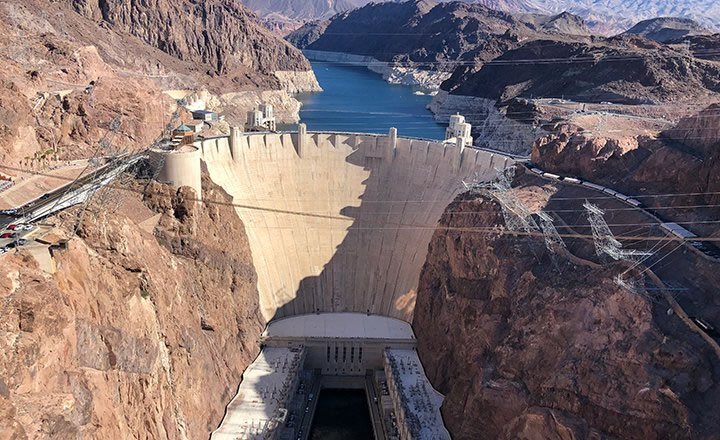
So how did one of the largest dams in the world ever get built in the middle of nowhere in middle of the great depression? How did it manage to actully work?
Easy. You get six companies together, each having a unique specilty and each needing to find a way to survive. When combined into one entity, they become unstoppable and can do almost anything.
Six Companies, Inc. was a joint venture of construction companies that was formed to build the Hoover Dam on the Colorado River on the Nevada and Arizona border.
They later built Parker Dam, a portion of the Grand Coulee Dam, the Colorado River Aqueduct across the Mojave and Colorado Deserts to urban Southern California, and many other large projects.
A consortium was formed by Utah Construction Company of Ogden, Utah, (general contractors), in order to submit a bid for the Hoover Dam construction contract. Because of the immense size of the first dam on the Colorado River, no single contractor had the resources to make a qualified bid alone.
Utah Construction Company (Wattis brothers; E.O and W.H Wattis) and vice president Andrew H. Christensen asked Harry W. Morrison of Morrison-Knudsen (now Washington Group International, a division of URS Corporation) to join them on this venture.
After they realized the bid would be much higher than expected, the Wattis Brothers and Morrison-Knudsen convinced others to join. These six companies (Utah Construction, Morrison-Knudsen, Kaiser, Bechtel, Pacific Bridge and MacDonald&Kahn) with the help of Frank T. Crowe worked out the bid. In February of 1931 the Six Companies was incorporated.
Six Companies, Inc.: President W.H. Wattis, First Vice President W.A. Bechtel, 2nd Vice President E.O. Wattis, Secretary Charles A Shea, Treasurer Felix Kahn and Assistant Secretary-Treasurer K.K. Bechtel. Board members included: W.H. Wattis, E.O. Wattis, Charles A. Shea, Felix Kahn, Stephen D. Bechtel, Henry J. Kaiser, Alan MacDonald and Philip Hart.
On March 4, 1931 the US Secretary of the Interior awarded Six Companies, Incorporated the contract to build Boulder Dam/ Hoover Dam. Six Companies, Inc. started working in spring of 1931.
The Six Companies board selected Frank Crowe, an employee of Morrison-Knudsen as the General Construction Superintendent of the Boulder Dam construction. Crowe also drafted the bid, hired each of the men who were employed during the course of the project, lived in Boulder City with his wife and two daughters and was on the dam site every day of the week until the project was completed. He was rewarded a bonus percentage of the profit for completing virtually every portion of the job well ahead of schedule.
Six Companies Inc. was composed of:
- Henry J. Kaiser Co. of Oakland, California and Bechtel Corporation of San Francisco (Bechtel-Kaiser): 30%
- MacDonald and Kahn of Los Angeles, California: 20%
- Utah Construction Company of Ogden, Utah: 20%
- Morrison-Knudsen of Boise, Idaho: 10%,
- Pacific Bridge Company of Portland, Oregon: 10%
- J.F. Shea Co of Portland, Oregon: 10%
Six Companies Inc. won the contract in 1931, after a bid of US $48,890,955 ($962 million in 2021 dollars). The project was so complex and large that only three bids were received. The Six Companies Inc. bid was $5,000,000 lower than the next bidder.
The Six Companies completed construction of “Hoover Dam” in under 5 years, offically two years ahead of schedule in 1935. Unofficially? Some sources say it took nine years (1938–47) under relative secrecy, to fix serious leaks with a supplemental grout curtain.
The Dam was offocially dedicated on September 30, 1935 by nwly elected preosdint Franklin Delano Roosevelt who called it Boulder Dam because he hated his predessor and the man who got it built, Herbert Hoover. Hoover was actually one of the original civil engineers on the project.
The Profiteers
This all sounds so easy and straight forward. Get six companies together, put in a bid and build one of the worlds largest structures in record time during the Great Depression. How difficult could that be?
A good tour guide buddy of mine recommended a great book to read “The Profiteers: Bechtel and the Men Who Built the World”. At least the first third of it relates to how Six Companies came together, built the dam on a shoestring budget and ended up making millions of dollars for themselves.
As the copy for the book details: “The tale of the Bechtel family dynasty is a classic American business story. It begins with Warren A. “Dad” Bechtel, who led a consortium that constructed the Hoover Dam. They would go on to “build the world,” from the construction of airports in Hong Kong and Doha, to pipelines and tunnels in Alaska and Europe, to mining and energy operations around the globe.
In their century-long quest, five generations of Bechtel men have harnessed and distributed much of the planet’s natural resources, including solar geothermal power. Bechtel is now one of the largest privately held corporations in the world.”
Gotta love their marekting. Liek I previously stated, the firt third of the book goes into detail on how they came together an dhow they made it work as well as how thye made millions from the contract. The remaining part of the book details how the survive entities are still reaping profits with their government connections and contracts
Amazon: The Profiteers: Bechtel and the Men Who Built the World
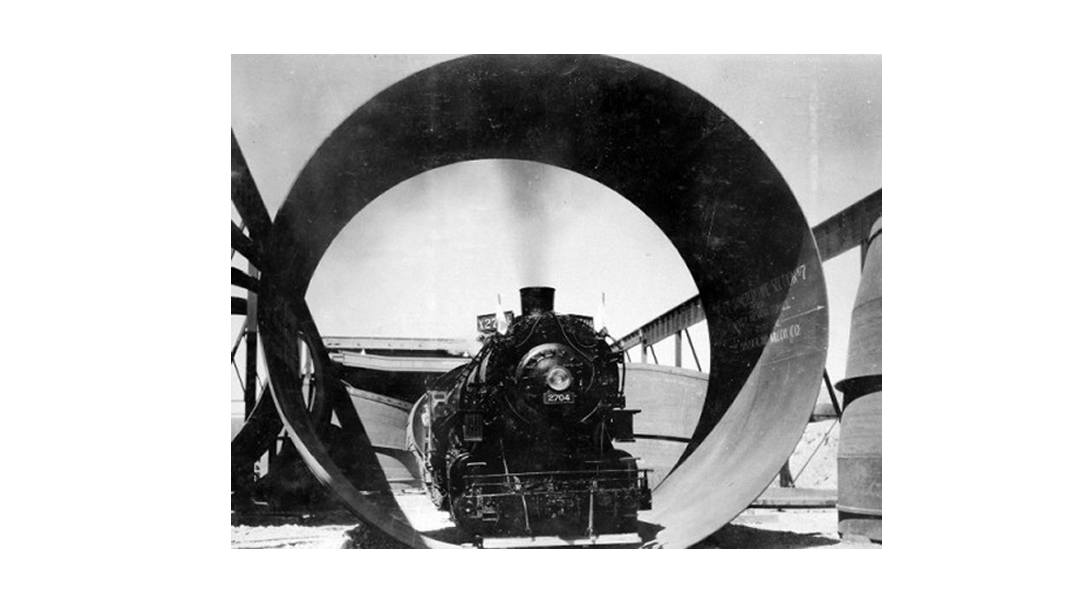
Six Companies RailRoad
To build a dam of this size, in the middle of nowhere, you need a railroad to bring in all the supplies and equipment. The Six Companies also built the 19.1-mile (30.7 km) Six Companies Railroad. It connected along the Hemenway Wash, present-day Las Vegas Bay, to the US Government Hoover Dam Railroad at Lawler, Nevada, a location also known as “US Government Junction”.
From Lawler the railroad went north for seven miles (11 km) to Saddle Island and then east to the Three-Way Junction gravel plant, now submerged under Lake Mead.
From the gravel plant the line split into two branches. One branch ran south for 4.8 miles (7.7 km) to Hoover Dam via Cape Horn, Lomix (the Low Level Concrete Mixing Plant) and Himix (the High Level Concrete Mixing Plant), and the dam face. The other branch is now also submerged under Lake Mead and ran north for 7.3 miles (11.7 km) across the Las Vegas Wash, crossed the Colorado River on a bridge into Arizona and the Arizona gravel pit (Arizona Gravel Deposits) at a location two miles (3.2 km) from Callville.
The line was constructed by railroad contractor John Phillips of San Francisco, California. In additon to the Six Comapnies Railroad, the US Government Railroad had a 10-mile (16 km) branch that brought supplies by rail from a connection with the Boulder City Branch of the Union Pacific Railroad at Boulder City, Nevada.
Much of the rail lines as well as most of the equipment usd to build the dam sits submerged under the waters of Lake Mead.
Buy The Book: The Profiteers
Take The Tour: Hoover Dam Tour

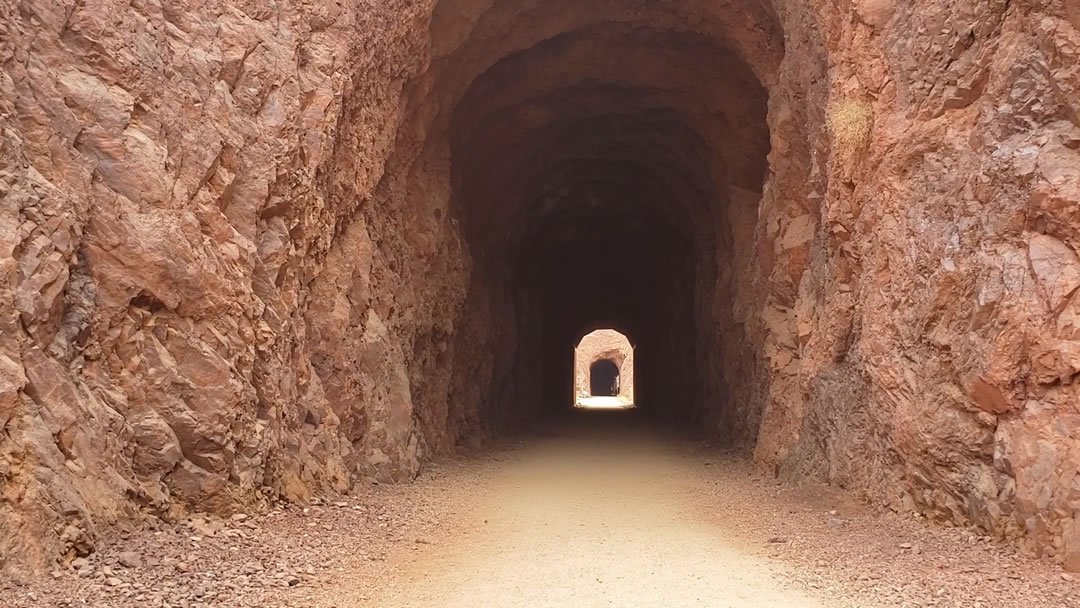
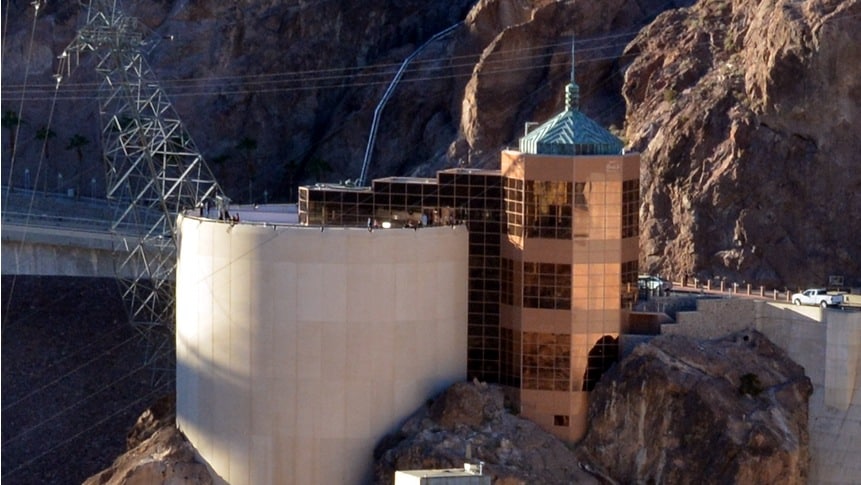
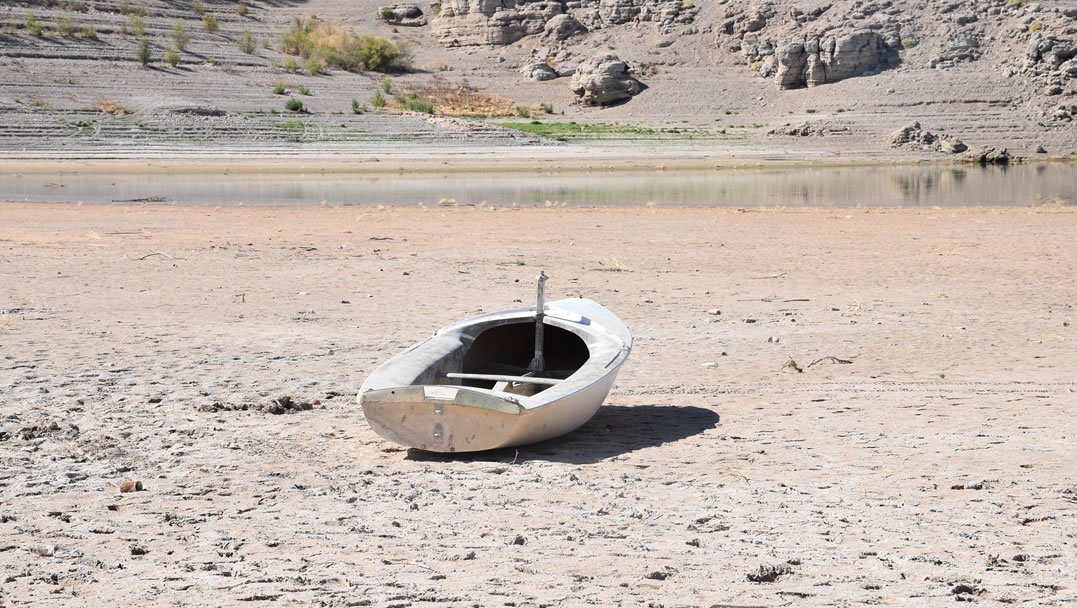
Be the first to comment